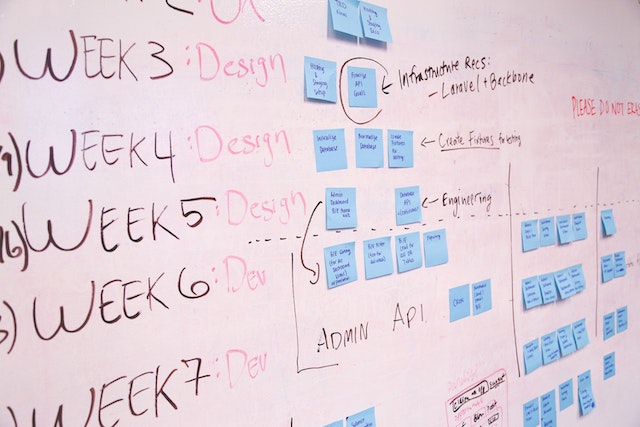The State of Agile Report 2020 highlights the overwhelming preference for Agile development methodology among respondents, with an impressive 95% of participants (over 40,000) favoring this approach. Agile methodology revolves around an iterative and incremental model, emphasizing cross-functional teams as key drivers of success within an organization.
One of the notable outcomes of adopting Agile is the ability to structure work in sprints, allowing for efficient task management and quick adaptability throughout the development cycle. The flexibility inherent in Agile empowers teams to move "back and forth" as needed, ensuring optimal outcomes and faster time to market. By fostering collaboration and a shared vision, Agile methodology unifies all team members, enabling them to work harmoniously toward a common goal.
Introduction To Software Development LifeCycle
Over the years, Agile project management strategies have revolutionized the software development lifecycle within organizations. This approach challenges the conventional "golden hammer" bias associated with the waterfall methodology, which often results in the accumulation of technical debt. Agile methodology encourages frequent feedback loops, continuous improvement, and an iterative approach to development, mitigating the risks of technical debt and fostering a culture of innovation.
In summary, the State of Agile Report 2020 underscores the overwhelming preference for Agile development methodology among industry professionals. This approach empowers organizations to embrace flexibility, collaboration, and adaptability, enabling them to navigate the complexities of software development and deliver exceptional results. By embracing Agile principles, businesses can leverage the strengths of cross-functional teams, achieve faster time to market, and overcome the pitfalls of technical debt associated with outdated methodologies.
F.A.Q
Agile emphasizes cross-functional teams throughout the firm and adheres to an iterative and incremental model, which are three crucial components of the approach that guarantee success.
Teams adopt the agile development process, which is an iterative approach to software development. Cross-functional, self-organized teams regularly assess user requirements and environmental factors to modify initiatives. The quality of sprints with short-term deliverables is continuously improved by Scrum teams.
The 4 Agile Manifesto values are:
- Individuals and interactions over procedures and equipment.
- Working software over thorough documentation.
- Collaboration with the client during contract negotiations.
- Responding to change as opposed to acting according to a plan.
The most popular Agile framework is Scrum. Others include Crystal, Feature-Driven Development, and Dynamic Systems Development Method (DSDM) (FDD).
The agile mindset is a way of thinking that emphasizes collaboration, understanding, learning, and maintaining flexibility in order to produce high-performing results. Teams can react to change and provide incremental value to their customers by fusing the agile mindset with processes and tools.
Agile is all about adapting to change; it was built on the foundational principle that business drivers will change and the development teams must be ready to adapt.
The main difference between Agile and Scrum is that, whilst Agile is a philosophy for managing projects that rely on a core set of values or principles, Scrum is a particular Agile methodology that is employed to facilitate a project.
The most well-liked and commonly used Agile approach is called Scrum. The Scrum framework was created to address the two main problems with software development—speed and shifting client demands. With this method, the software development project is carried out in phases, each of which is referred to as a Sprint.
A key performance indicator is referred to as a KPI. It serves as a tool for assessing team performance to make sure they are on pace to meet the project's goals. KPIs are employed by a variety of divisions, including marketing, customer success, and finance.
Agile software development approaches focus on providing tiny, functional pieces of software fast in order to increase customer satisfaction. These tactics emphasize ongoing improvement through the utilization of collaborative efforts and flexible strategies.
The Agile technique is a strategy to manage projects by segmenting them into several phases. Continuous improvement is needed at every stage, as well as ongoing collaboration with stakeholders. Teams cycle through a process of planning, carrying out, and assessing once the job begins.
Agile methodologies aim to produce the proper product by incremental and frequent delivery of small functional chunks through small cross-functional self-organizing teams, enabling frequent customer input and course correction as necessary.
Agile is an iterative method of project management and software development that supports teams in providing value to their clients more quickly and with less stress. An agile team produces work in small, digestible increments as opposed to placing all of their eggs in one massive "big bang" launch.
Agile provides transparency, improved client-vendor communication, and a quicker response to changes in the market and the project itself. All of these factors have a big impact on overall customer satisfaction and the achievement of their business objectives.
The five different phases of the Agile Project Management framework include the envision phase, the speculate phase, the explore phase, the adapt phase, and the close phase.
One of the most well-known agile project management solutions ever created is definitely Atlassian JIRA. Atlassian JIRA is really used by Justinmind to organize daily activities and sprints.
Agile is built on the principles of collaboration, open communication, trust and independence, efficiency, and continuous delivery. These principles can have a beneficial, long-lasting effect on practically any place in your organization.
An Agile Team must guarantee ongoing communication, the right expertise for the efficient creation and delivery of the products/services, a high degree of freedom, and ongoing iterative learning.



